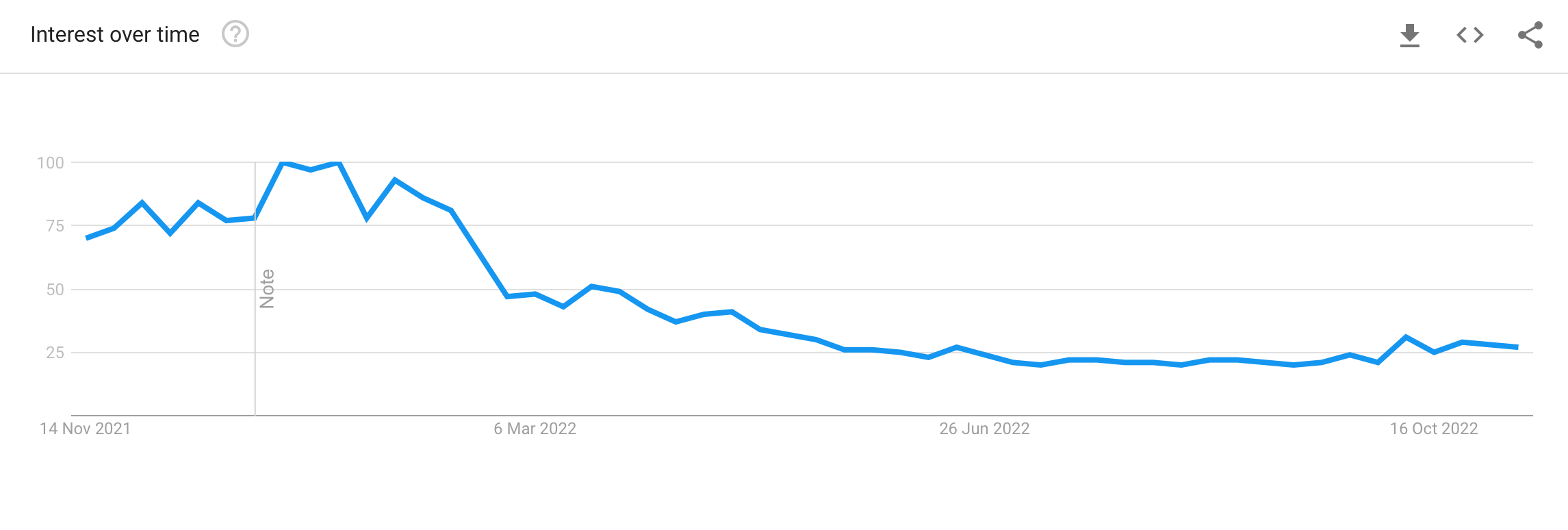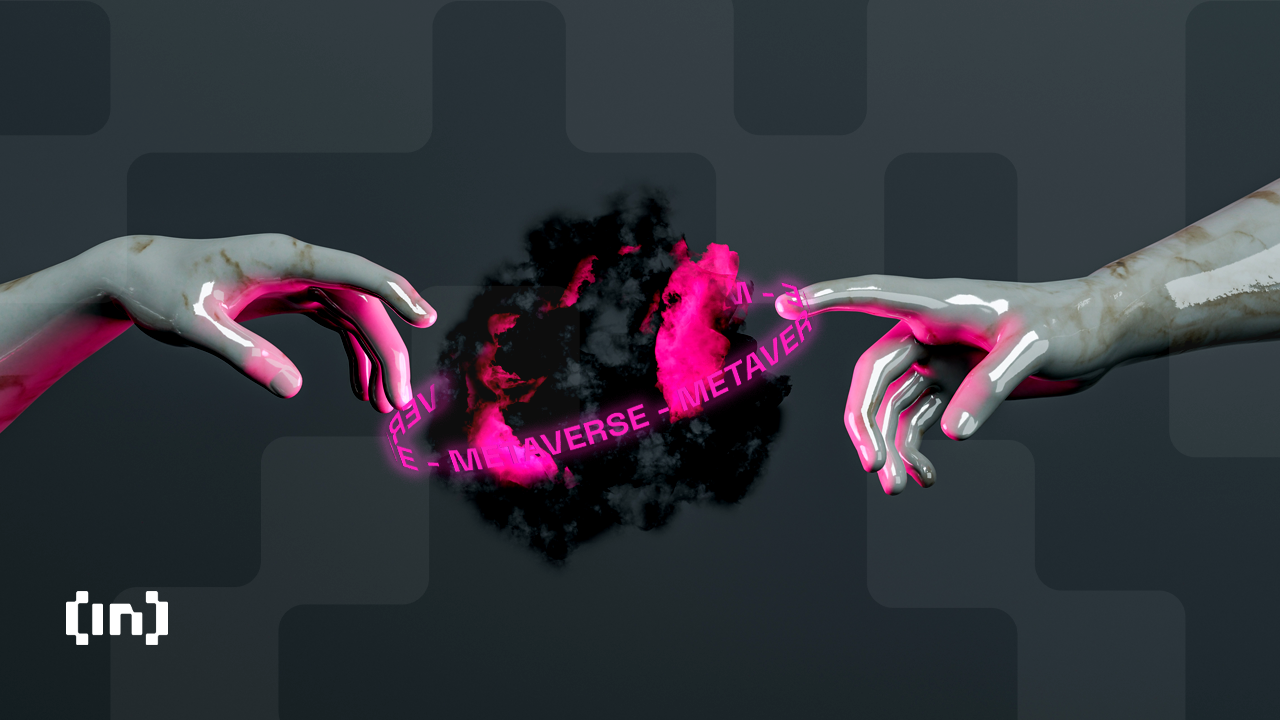The “Consortium DAO” comprised of some of the leading Web3 brands, including The Sandbox and Decentraland, will aim to foster inclusiveness, transparency, decentralization, and interoperability in the metaverse.
DAOs (decentralized autonomous organizations) have been common terminology associated with the blockchain industry. The advent of blockchain technology created a way to autonomously transfer value and govern those transfers via smart contracts. It is this idea of autonomous governance that gave birth to DAOs.
A DAO can be described as a “community formed around a central idea that each member thinks is worth investing in. Money pooled within that DAO keeps track of each person’s contribution and gives proportionate governance rights.”
2021 and 2022 saw these groups (DAOs) move into the Web3 sector as it corresponded to the future of blockchain technologies. Renowned metaverse innovators took the fight to protect decentralization to protect the structure of the open or decentralization metaverse.
Metaverse and Web3: From Nothing to Something
The transition from Web2 to Web3 has created a stir in financial markets. The reason is the importance and likely need for “decentralization.” From Chrome to Brave (browser), from AWS to IPFS/Filecoin (storage), and the list goes on.
SponsoredUsers can control and own their creations, online identities, and content. So-called “next generation of the internet.”
The transition injected strength to fight the sheer control or bureaucratic leadership by a centralized leader. Such efforts to make web content more resilient and unconstrained.
For example, following the Capital riot on Jan 6, former President Trump was banned from Facebook and Twitter. Instead, a decentralized system would make that kind of control more difficult in the future.
The metaverse plays an integral part in ensuring the smooth movement of people and products across digital and physical worlds. It is indeed a core feature of Web3. An amalgamation of physical reality, augmented reality (AR), and virtual reality (VR) into a unique experience.
Exciting, right?
Despite that, the “hype” around this took a significant downturn, especially in 2022. Both Metaverse and NFTs witnessed respective declines in traction and capital flows.
Google trends data on the search term “metaverse” narrated a rather grim scenario. Now metaverse is at the front and center of Web3.

Still, it is easy to identify or pinpoint problems in its early stages. One such issue in Web3 so far is interoperability, but the Open Metaverse Alliance for Web3 (OMA3) is taking steps to counter this narrative.

Web3 Companies for One Goal
The Open Metaverse Alliance for Web3, OMA3 for short, combined different forces for one aim: decentralization. The Open Metaverse Alliance OMA3, launched on Nov. 1, aims to contribute to the solution by creating standards for this communication to happen.
According to the official blog, this organization added a quote to define this union.
Sponsored Sponsored“OMA3 is a DAO (decentralized autonomous organization) that operates like a consortium. Governance is guided by the principles of inclusiveness, transparency, and decentralization. The standards we create are guided by the goals of true ownership and real-time interoperability.
We will build infrastructure to ensure the metaverse operates as a unified system where digital assets (such as NFTs), identities, and data are permissionless and interoperable for all and controlled by users, not platforms. Users will immutably own these assets and transfer them to any OMA3 virtual worlds freely, without needing the platform’s permission.”
Web3’s biggest metaverse innovators include top names like Animoca Brands, Yuga Labs, and The Sandbox. And they present opportunities for potential investors and traders.
Under the Same Umbrella
A group to construct an open and borderless metaverse called the “Open Metaverse Alliance for Web3” (OMA3) came in being in July this year.
This coalition created the DAO metaverse to work on the challenges facing the Web3 industry.
The organization even invited like-minded blockchain-oriented firms to join it in its efforts “to realize this goal of an open metaverse.”
“New users will be onboarded mainly by the participating platforms. If users understand that they can carry their identity across the metaverse, the barriers to sign up should be lowered and support onboarding more users,” said Dirk Lueth, founding Member and chair of OMA3
Doors Start to Open
Several key members of the OMA3 featured at the Global NFT Summit in London, helping spread the word about the new consortium.
SponsoredFounding members include Dirk Lueth of Upland and Batis Samadian of the SPACE Metaverse. They were joined by Sébastien Borget of The Sandbox and Saro McKenna of Alien Worlds.
BeInCrypto reached out to different executives of the aforementioned groups to get an official statement about the recent developments.
First and foremost, the question that arises was the rivalry aspect. Even though these organizations worked for the same goal, they were still competitors after all.
Batis Samadian, the Vicechair of OMA3 told BeInCrypto:
“Competitors cooperate in consortiums to ensure the best end-user experience for things like interoperability. See Bluetooth, WiFi, and EV charging cables. Making the user experience better increases the market for all, and a rising tide lifts all boats.”
Moving on to the goal which was to boost interoperability, did it actually beneficial to this mission? To which, Saro McKenna added:
“OMA3’s mission is to advance and promote the user-owned metaverse as opposed to the platform-owned metaverse. This increases the value and enjoyment players can get from the assets, levels, or game items they earn. It also means that in time, whole communities as DAOs will be able to manage the assets they earn in numerous gaming metaverses, within a single DAO.”
Looking out for You
Meanwhile, Sébastien Borget joined in to say:
Sponsored Sponsored“It provides the best possible experience for users – for example, allowing them to move hard-earned assets from one virtual world to another. We’re also cooperating in other areas within OMA3, including security, user safety, and legal.”
The goal is to ensure virtual land, digital assets, ideas, and services are interoperable between platforms and transparent to all communities. OMA3’s group will create standards that allowed users to port between virtual worlds.
The Asset Transfer Working group and the Legal working group played respective roles in supporting this narrative. Hence, enthusiasts could join as a “Creator Member” on the OMA3.org website.
OMA3 is open to all Web3 metaverse builders; companies can join as creators or community members.
Clouds on the Horizon?
Developments in the metaverse continue to grow at a rapid pace. However, there are chances of some pitfalls, especially within the regulatory zone.
Given the growth in the number of DAOs, they can no longer operate under the radar and dodge regulatory measures that could make it increasingly more difficult to set up and operate a DAO.
DAOs have benefited from an “investment club” exemption that has allowed them to avoid SEC rules in the U.S. by limiting membership to 100 people or fewer.
With the growing investment sizes or funding amounts flowing through DAOs, regulators may start cracking down on even these limited membership DAOs.
Since DAOs provide some level of anonymity, they could serve as another vehicle to launder money from illegal operations which give the SEC another reason to investigate.

On the other hand, giants such as Facebook, with its parent company Meta, have already set out their vision of the metaverse. Facebook CEO Mark Zuckerberg believes the next generation internet will rely heavily on virtual reality.
Meta’s push to develop virtual and augmented reality technology has had a bumpy year. But as big players continue to play their cards right, we might be in for some entertainment.
Got something to say about Metaverse or anything else? Write to us or join the discussion in our Telegram channel. You can also catch us on TikTok, Facebook, or Twitter.

